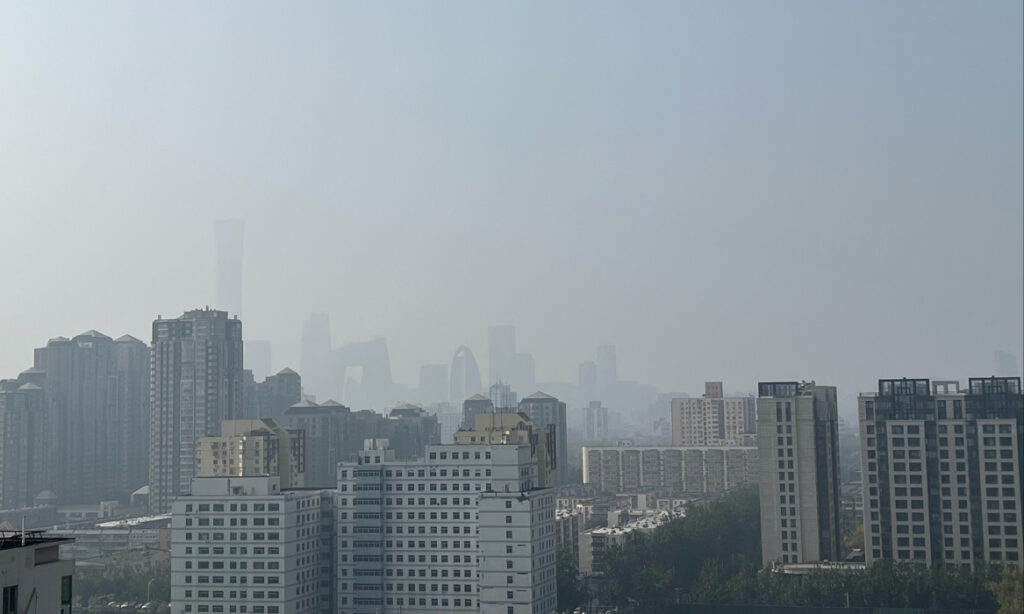Beijing and surrounding area could witness medium to heavy pollution over coming days, China’s Ministry of Ecology and Environment (MEE) said on Tuesday, noting that the capital’s pollution was caused mainly by low pressure, high humidity, and temperature inversion, which made diffusion of pollutants challenging.
In the first half of November, the air quality in most parts of China was reported as mainly good to mild, with some areas experiencing moderate to severe pollution during certain periods. For the first few days of November, cities in the southern part of the Beijing-Tianjin-Hebei region and surrounding areas may experience moderate to severe pollution, with some locations reaching severe pollution levels for a short period of time, according to the MEE.
The ministry said that Beijing’s air pollution was caused because of the low pressure, high humidity, and temperature inversion made diffusing pollutant difficult. The major pollutants in the Chinese capital is PM2.5.
Beijing authorities on Monday issued an orange alert for heavy air pollution which came into force on Monday at noon. A range of emergency response measures will be implemented from Tuesday to Thursday, including mandatory traffic restrictions on heavy-polluting vehicles.
The Beijing Municipal Ecology and Environment Bureau has advised children, the elderly and those suffering from respiratory, cardiovascular or other chronic health conditions to stay indoors, and other people to reduce outdoor activities.
Apart from the unfavorable weather conditions, experts also pointed out that the level of activities in regional industrial enterprises, heavy vehicle traffic and the number of straw burning points has all increased, leading to an increase in pollutant emissions.
In terms of industrial sources, since late October, the regional industrial electricity consumption has increased by about 5 percent compared with early and middle October, with the cement and brick industries showing a more significant increase in power consumption.
The traffic volume of heavy vehicles including trucks in the Beijing-Tianjin-Hebei and surrounding areas has remained high since autumn, with an increase of about 14 percent compared with the early and middle October, experts said.
(Global Times)




